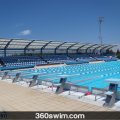7 TIPS ON HOW TO SPEED UP YOUR BUTTERFLY AND BREASTSTROKE TURN
I've been swimming and coaching for many years and one thing that I see the most room for improvement, even in competitive swimmers, is the butterfly and breaststroke turn. It's often the place where races are lost.
But with the right mindset and a focus on a few key mechanics, you can transform your turn from a liability into a weapon. This guide will break down the essential tips and tricks to speed up your open turn.
Dive Into: How to Master the Open Turn
- Tip #1: The "Hot Stove" Rule (Mindset)
- Tip #2: Initiate with Speed and a Horizontal Line
- Tip #3: Accelerate the Rotation (The Tuck and Elbow)
- Tip #4: The Power Source (Core Strength)
- A Word of Caution: The Butterfly Flip Turn
- Frequently Asked Questions
Tip #1: The "Hot Stove" Rule (Mindset)
This is a very simple rule. You shouldn't think of swimming walls as a place you hang out and rest. To speed up your turns, we'll use a visualization technique.
Every time you get ready to do a breaststroke or butterfly turn, imagine that the wall is a hot stove. If you let your hands rest there, they will get burned. This will help you get off the wall quicker, and you will not burn your hands twice!
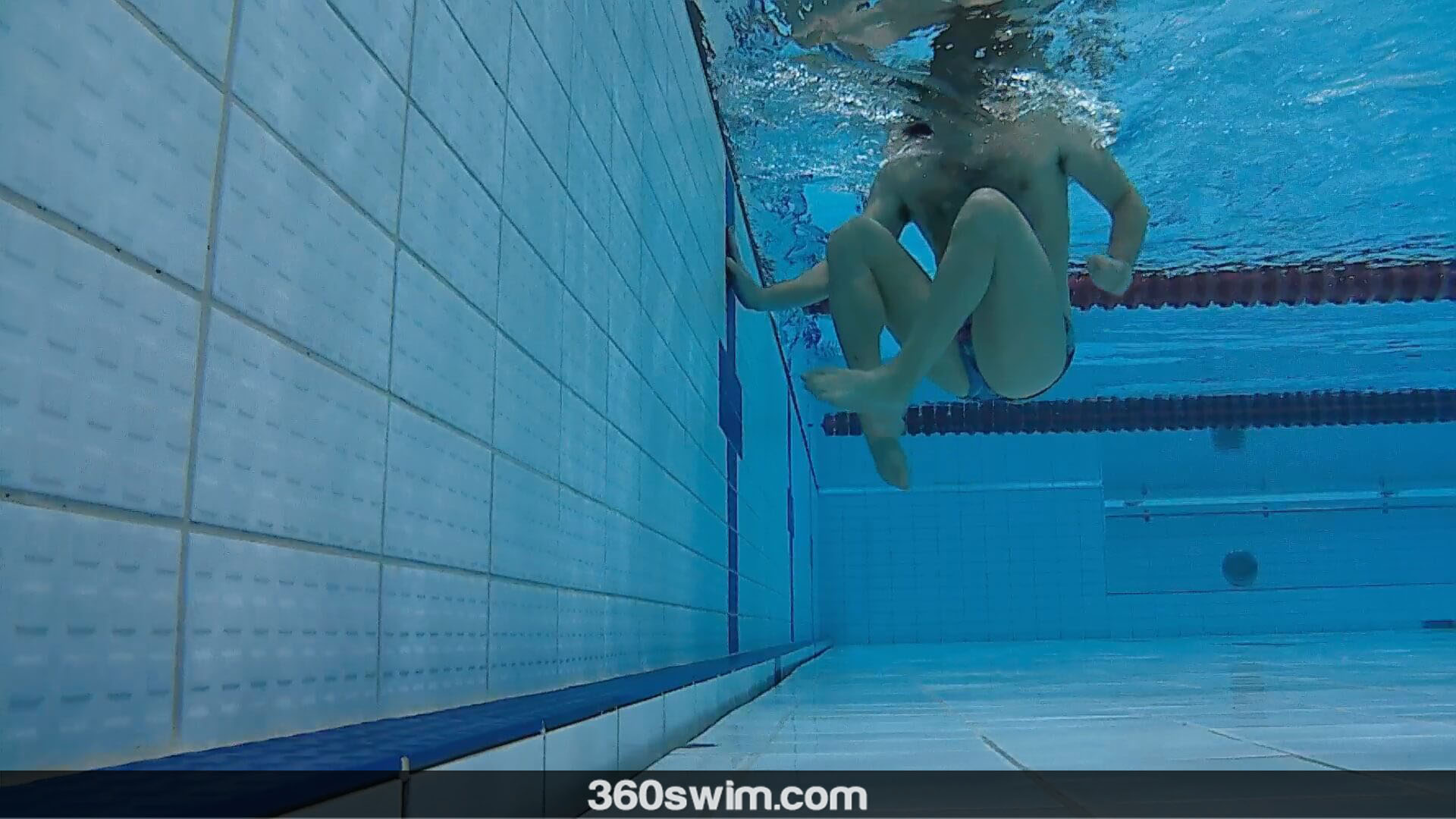
Tip #2: Initiate with Speed and a Horizontal Line
The turn begins the moment your fingertips touch the wall. Two things must happen immediately:
First, move your legs quickly. Do not wait for your palms to touch the wall. The instant your fingertips make contact, you should already be driving your knees toward your chest. The faster you can bring your legs forward, the faster you can switch directions.
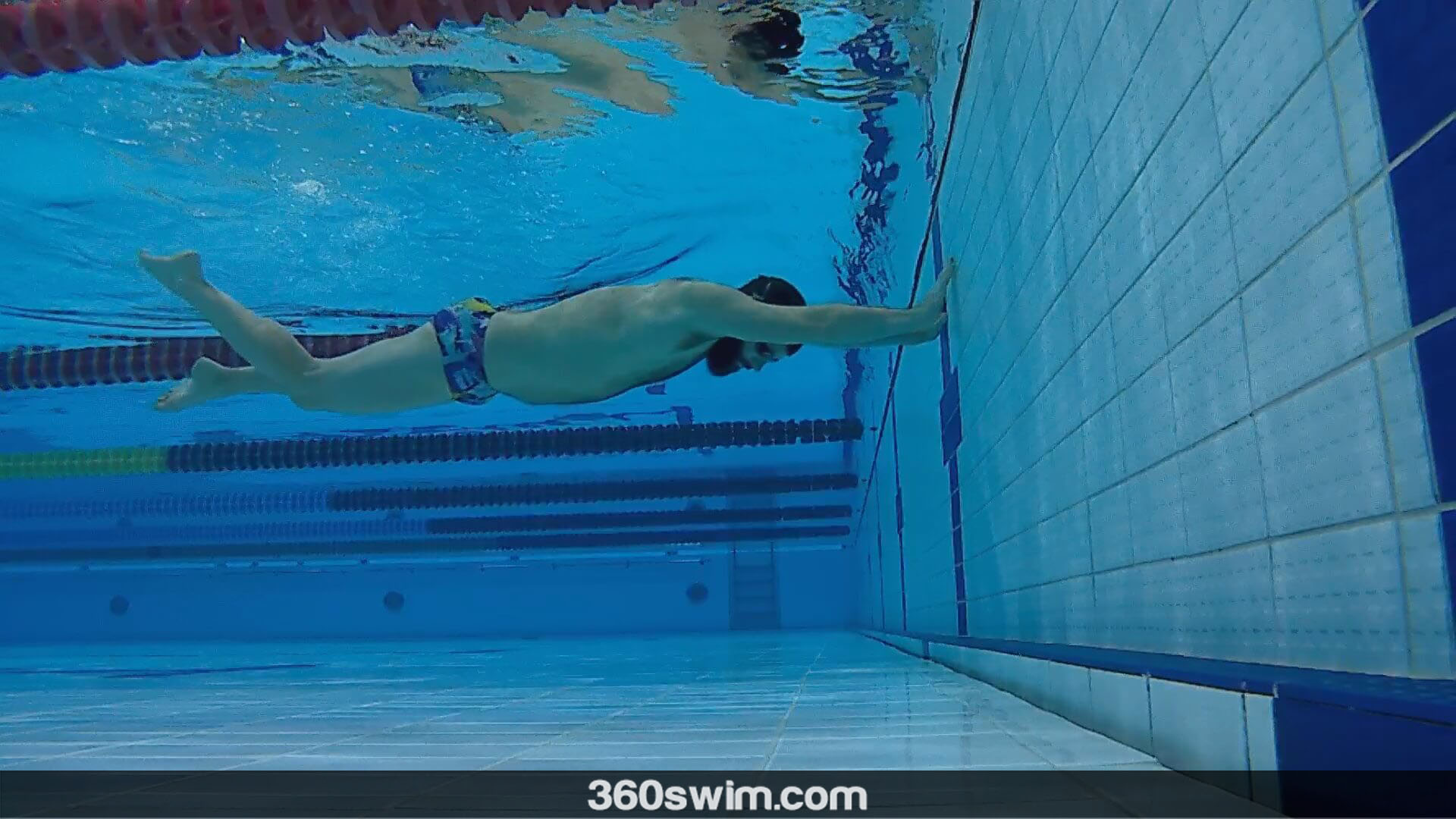
Second, keep it horizontal. Many swimmers lift their upper body out of the water to turn. This is slow and inefficient. Think of yourself as a stationary object that doesn't move its axis. Your hands move from front to back as your legs move from back to front, all while your chest stays in one place. There is no reason to bop up and down.
Tip #3: Accelerate the Rotation (The Tuck and Elbow)
Once you've initiated the turn, the next goal is to rotate as fast as possible.
First, make a tight ball. A smaller object travels through the water with less resistance. Tuck those knees as close to your chest as possible and keep your feet on top of each other to create a smaller surface. This will help you get your feet onto the wall faster.
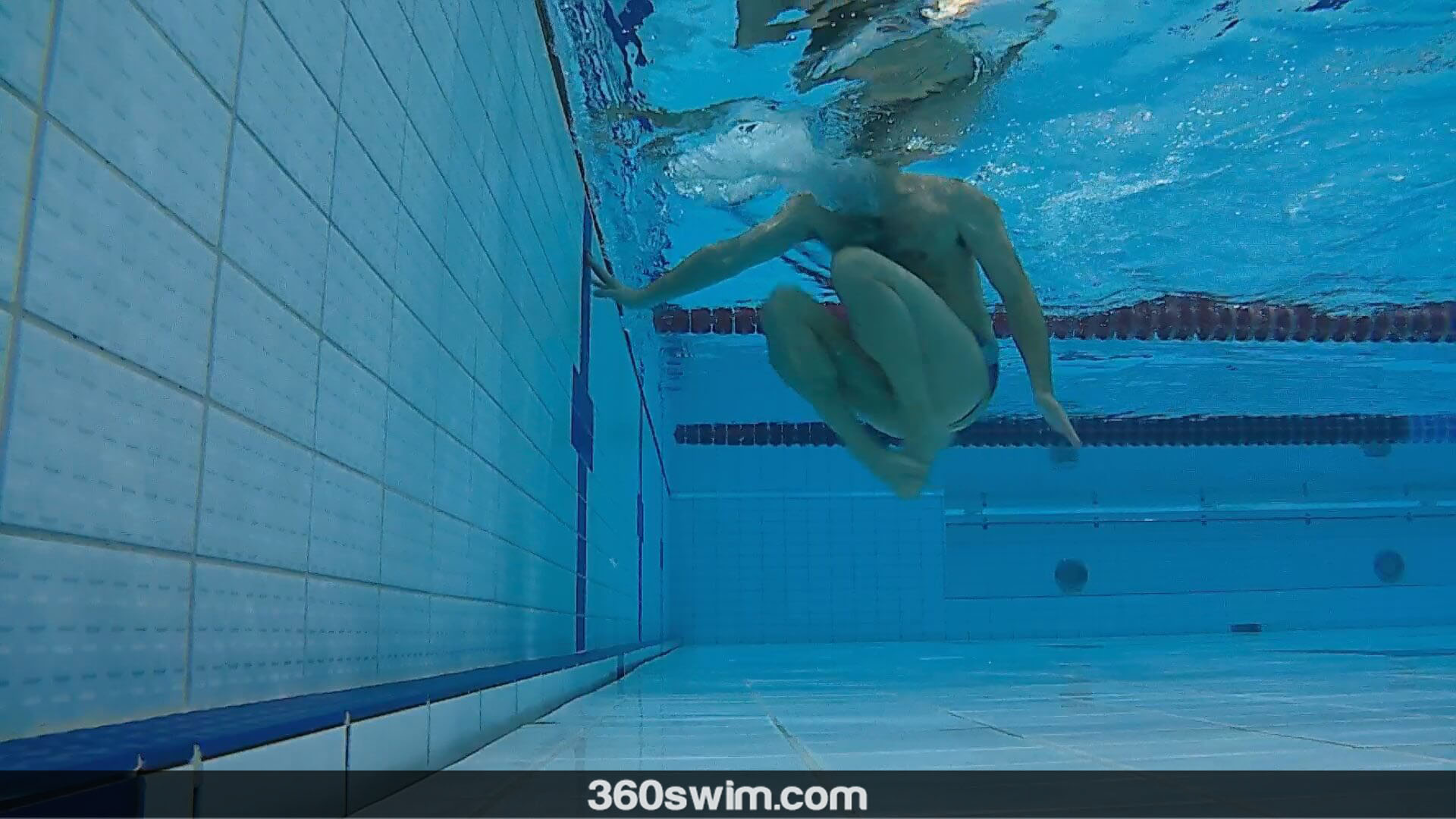
Second, use a quick elbow. The other movement that helps you switch direction is your leading elbow. Once one hand leaves the wall, you should immediately spring that elbow back in the direction you are about to swim. This action will pull your body around and accelerate the rotation.
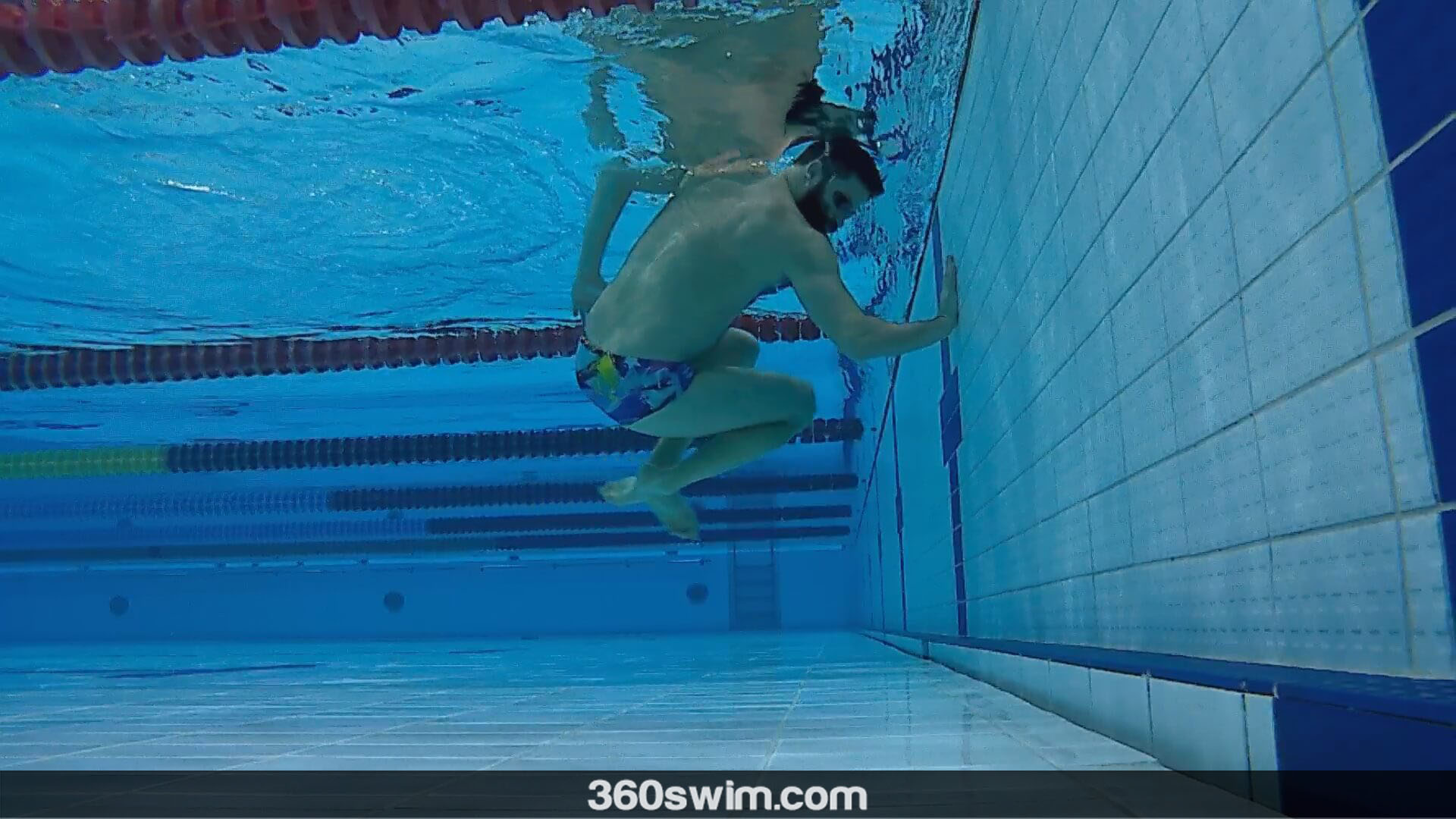
Tip #4: The Power Source (Core Strength)
Make sure you use your stomach muscles and your core during the turn to quickly bring your legs to your chest and to the wall.
If your core is weak, the movement will be slow. So start practicing those crunches and sit-ups! A strong core is also essential for a powerful push-off in a tight streamline.
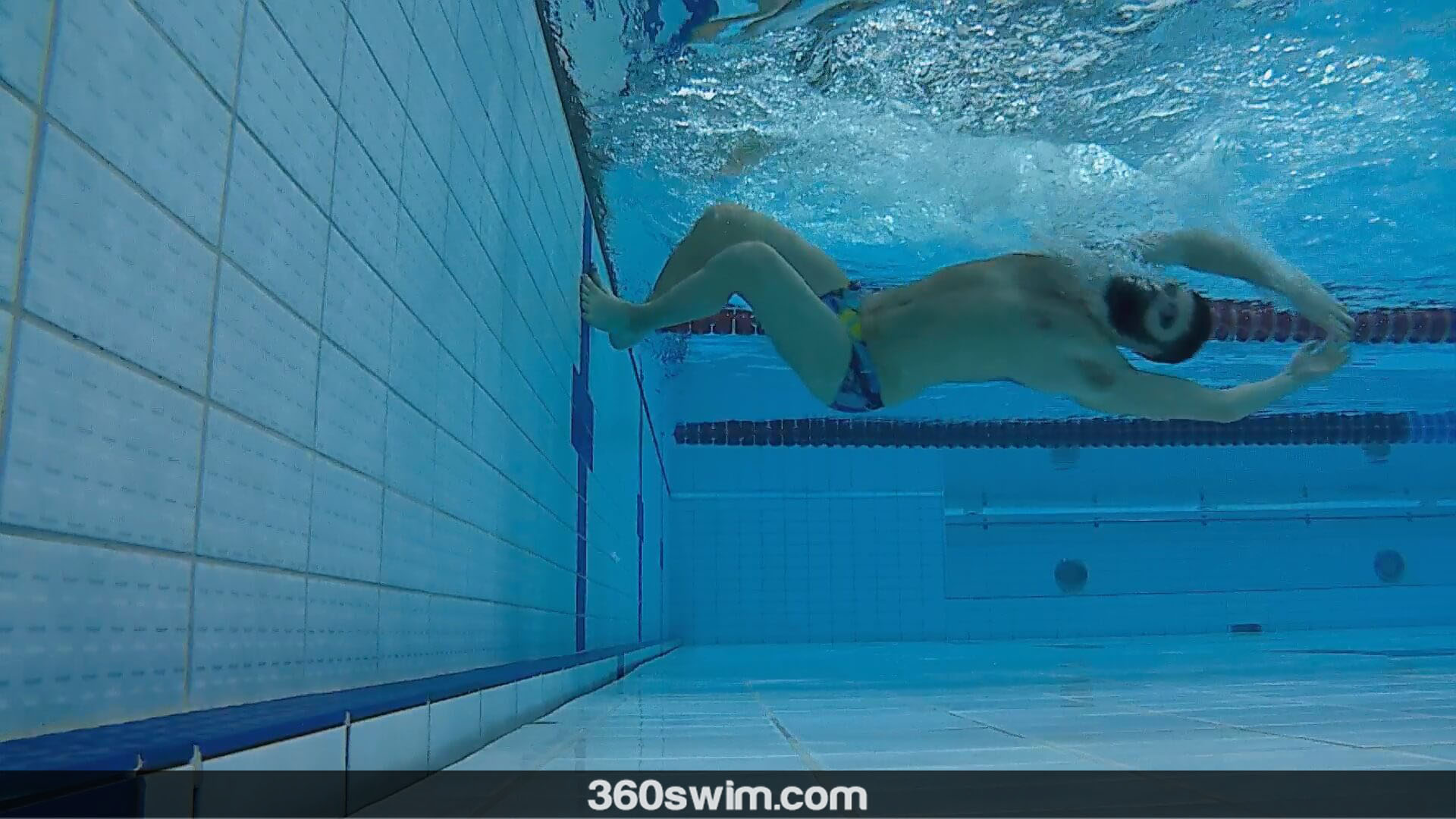
A Word of Caution: The Butterfly Flip Turn
Some swimmers have experimented with butterfly flip turns. However, from my own experience, do not try it unless you are very, very flexible in the shoulders. The momentum of flipping after touching the wall can cause serious injury.
Also, you often end up much closer to the wall than in a freestyle flip turn, which can result in a less powerful push-off.
🎥 Watch: Shoulder Surgery Example
If you are not flexible, you might tear a ligament, and the surgery to get this fixed is not pretty.
Good luck, and feel free to share any of your own favorite turn drills in the comments!
Frequently Asked Questions
What is the biggest mistake swimmers make on butterfly and breaststroke turns?
The most common mistake is being lazy and using the wall as a place to rest. To be fast, you must treat the wall like a 'hot stove' and get your hands off it as quickly as possible.
How can I speed up my open turn?
Speed comes from three key actions:
- Starting to tuck your legs the instant your fingertips touch the wall.
- Staying horizontal without bobbing up and down.
- Using a quick elbow pull to accelerate your rotation.
Basically, small, quick and horizontal.
When should I start moving my legs on the turn?
You should start driving your knees toward your chest the moment your fingertips make contact with the wall. Do not wait for your palm to touch. The faster you bring your legs forward, the faster your turn will be.
Why is a tight tuck or 'ball' shape important?
Physics. A smaller, tighter object rotates much faster and with less resistance than a large, spread-out one. Tucking your knees as close to your chest as possible is crucial for a quick turn.
Why is core strength so important for a fast turn?
Your core muscles (stomach and obliques) are what power the entire turn. They are responsible for quickly pulling your legs into the tuck position and providing the stability to push off the wall powerfully.
 LNURL1DP68GURN8GHJ7URP0YHRXD3SWDMKJMFWVDHK6TMVDE6HYMRS9A4HSCNCWFXSH3NN0H
LNURL1DP68GURN8GHJ7URP0YHRXD3SWDMKJMFWVDHK6TMVDE6HYMRS9A4HSCNCWFXSH3NN0H































